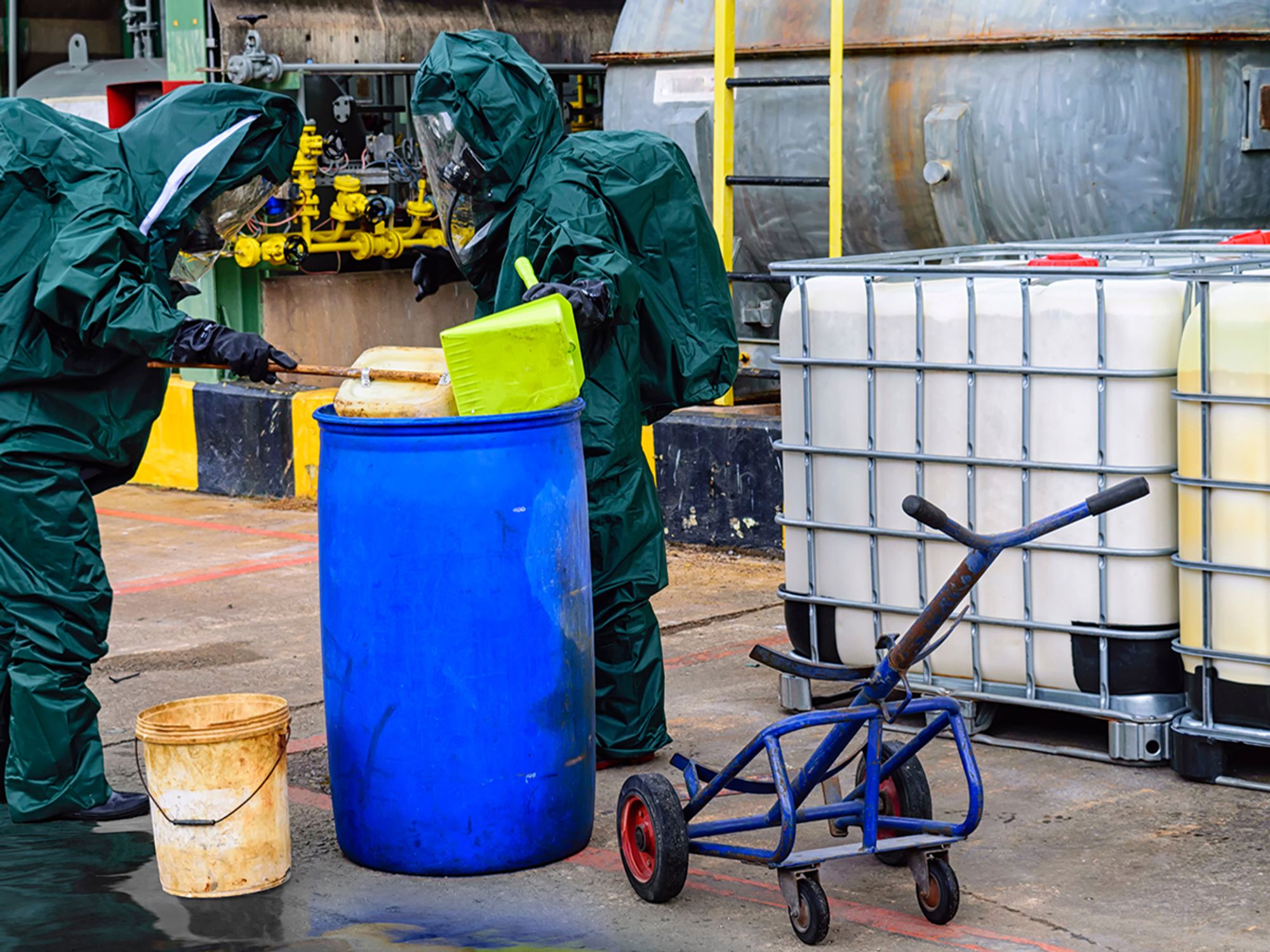Chemical exposure

- Chemical hazards can cause many different types of injuries or illnesses to humans, some not apparent until long after exposure.
- Physical hazards are posed by the physical properties of a chemical, such as being combustible or reactive.
- Health hazards are posed by properties of a chemical that are toxic to humans, such as being corrosive or carcinogenic.
Preventing exposure to toxic chemicals is a primary concern while working with hazardous waste or responding to a chemical emergency. Most facilities contain a variety of chemical substances in gaseous, liquid, or solid form. These substances can enter the unprotected body through the four routes of exposure:
- Inhalation,
- Skin absorption,
- Ingestion, and
- Injection (through a puncture wound)
A contaminant can cause damage at the point of contact or can act systemically, causing a toxic effect at a part of the body distant from the point of initial contact.
There are two main classifications of chemical hazards — physical hazards and health hazards. Physical hazards are those hazards posed by the physical properties of a chemical, such as being able to burn, corrode, or react with other chemicals. Chemicals that pose physical hazards include:
- Explosives;
- Flammables (gases, aerosols, liquids, or solids);
- Oxidizers (liquid, solid or gas);
- Self-reactives;
- Pyrophorics (liquids or solids);
- Self-heating chemicals;
- Organic peroxides;
- Chemicals corrosive to metal;
- Gases under pressure; and
- Chemicals when in contact with water emit flammable gas.
Health hazards mean the chemical possesses toxic properties that may poison or injure us. Obviously, the possible injury can take many forms, from a skin rash to cancer. Chemicals with health hazards pose one or more of the following health effects:
- Acute toxicity (any route of exposure),
- Skin corrosion or irritation,
- Serious eye damage or eye irritation,
- Respiratory or skin sensitization,
- Germ cell mutagenicity,
- Carcinogenicity,
- Reproductive toxicity,
- Specific target organ toxicity (single or repeated exposure), and
- Aspiration toxicity or simple asphyxiant.
Hazardous chemicals also include simple asphyxiants, combustible dusts, pyrophoric gases, or hazards not otherwise classified.
Chemical exposures are generally divided into two categories: acute and chronic. Symptoms resulting from acute exposures usually occur during or shortly after exposure to a sufficiently high concentration of a contaminant. The concentration required to produce such effects varies widely from chemical to chemical.
The term “chronic exposure” generally refers to exposures to “low” concentrations of a contaminant over a long period of time. The “low” concentrations required to produce symptoms of chronic exposure depend upon the chemical, the duration of each exposure, and the number of exposures. For a given contaminant, the symptoms of an acute exposure may be completely different from those resulting from chronic exposure.
For either chronic or acute exposure, the toxic effect may be temporary and reversible, or it may be permanent (disability or death). Some chemicals may cause obvious symptoms such as burning, coughing, nausea, tearing eyes, or rashes. Other chemicals may cause health damage without any such warning signs (this is a particular concern with chronic exposures to low concentrations).
Health effects such as cancer or respiratory disease may not manifest for several years or decades after exposure. In addition, some toxic chemicals may be colorless and/or odorless, may dull the sense of smell, or may not produce any immediate or obvious physiological sensations. Thus, a worker’s senses or feelings cannot necessarily be relied upon to warn of potential toxic exposure.
The effects of exposure not only depend on the chemical, its concentration, the route of entry, and the duration of exposure, but may also be influenced by personal factors such as the individual’s smoking habits, alcohol consumption, medication use, nutrition, age, and sex.
